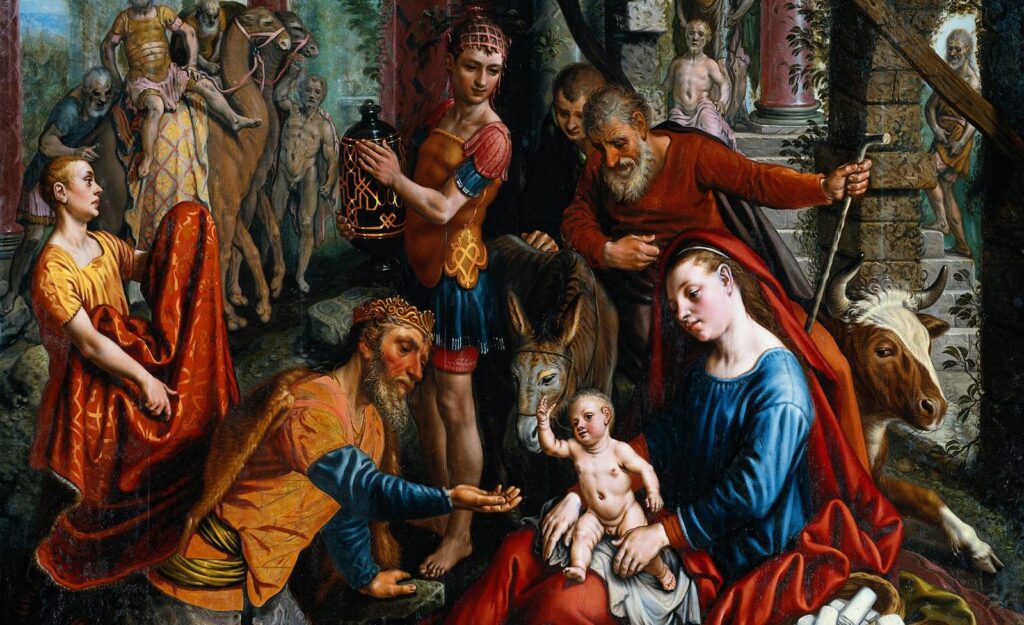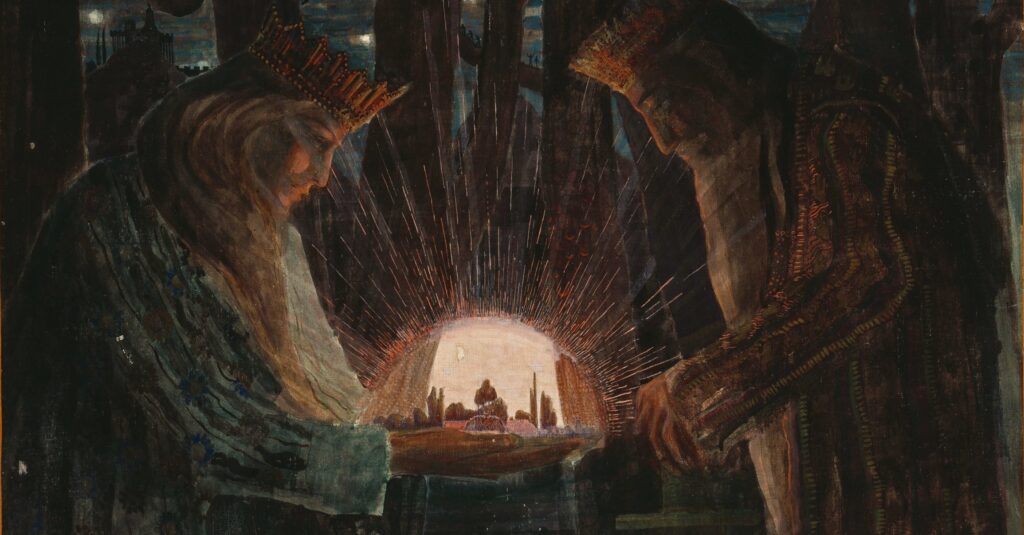
Truth on Trial: a Review of Frederick Buechner’s Telling the Truth
“For us everything has been turned on its head, for us the real is unreal, the unreal real. And death, death is the last great beyond.” Norwegian writer, Karl Ove Knausgaard wrote these words in the first part of his much-heralded autofiction (some parts true some exaggerated) book, My Struggle, 2009. Knausgaard discovered this conclusion while studying modern art and decried the fact that the intellect had become everything in the modern world, even art itself.
Writer and theologian, Frederick Buechner, in his 1977 collection of essays, The Gospel as Tragedy, Comedy, and Fairy Tale, flips this paradigm. Though he is writing before Knausgaard, the world Knausgaard is living in and describing is as real as what Buechner is encountering in America in the 1970s. Buechner shows that a faith centered on the cross can cultivate the imagination necessary to find truth in the world of the extraordinary.
As the title indicates, Buechner breaks down his essays by focusing on tragedy, comedy, and fairy tale. These literary categories encompass the whole of human existence, he writes. In order to accept the truth, Buechner is urging the reader to understand who or what this truth is.
The real, extraordinary, and impossible are constantly interweaving, dancing, and confronting our orientations and desires whether we want them to or not. For Knausgaard, in his statement above, the disorientation of modernity struggles to come to a consensus about the ultimate proper purpose and desires. So what is left is death as the “great beyond,” which is vague at best. For the biblical figure Pontius Pilate, the world of the extraordinary was brought before him and instead of packing his bag to get ready to go on an adventure with the extraordinary with Christ in the same room, he stayed in his hobbit hole.
This brings me to a part of the book that sticks with me. Buechner reimagines Pontius Pilate’s daily proclivities, aspirations, and family life. One of the Bible’s concerns is the everyday struggles and obligations that its characters faced.
Buechner draws in the reader by portraying Pilate as an over-the-hill ruler who is not content with his place in the Roman hierarchy. Setting Pilate in modern times, Buechner rewrites the account of Christ on trial by placing Pilate at the center. Pilate, the de facto judge, is portrayed as a frequent cigarette smoker who flirts with his secretary and longs for fulfillment and purpose. When Pilate’s wife contacts him, she gives off the air of being a discontented housewife. Buechner writes, “[Pilate’s wife] is apologizing for bothering him, for weeping, apologizing for her life. She has had a bad night, the same dark dreams … .”
Buechner’s narrative reminds me of movies based around Gen X characters, such as Troy in Reality Bites, where simple problems take too much energy to solve and where a one-word review like “disaffected” summarizes the characters completely.
Buechner transitions from this to the man standing before Pilate who is Christ. According to Pilate’s advisers, this man is an “up-country messiah” who caused a demonstration at one of the city’s gates. By setting the scene this way, Buechner is exposing how Christ sweeps into the everyday, like God touching down in the Holy of Holies.
In Pilate’s exchange with Christ, Buechner’s narrative flows back into a nonfiction account. After Buechner writes Pilate’s question to Christ, “What is truth?” he delves into silence and its importance. For Buechner, silence, in a hypothetical situation, is how a preacher should answer someone when parishioners ask what truth is. Understanding truth and what it means is a fundamental human yearning. This is why Buechner incorporates silence with truth. Embracing silence is a way of humility, and in this truth can be received.
In a book that focuses on literary genre and grand themes like the extraordinary in the ordinary, Buechner here scales back and brings to light the fact that before “the Gospel is a word, it too like truth is silence.”
This reminds me of a fantastic scene in the recent movie The Sound of Metal, in which a heavy metal drummer struggles with his increasing loss of hearing. When he finds acceptance in a deaf community, the protagonist becomes restless and wants to leave the community and find his girlfriend and resume his life with her. The leader of the community, who is also his mentor, asks him if he found peace and solace in the community. The mentor states, “[F]or me, those moments of stillness, that place, that’s the kingdom of God.” This statement parallels what Buechner is capturing by confronting Pilate with Christ’s silence. Unfortunately, the protagonist already had made up his mind to leave the community and does so.
The account of Pilate is only one highlight of the book. Other moments that are worth reading are the passages on the Prodigal Son and Abraham, all told from a setting and point of view fully realized by Buechner.
Buechner’s encounter with the gospels and his insight into truth counteract Knausgaard’s understanding. As a matter of fact, Buechner can speak to Knausgaard and those like him, for he made it explicitly clear that tragedy does not have the final word just as there is “darkness by light, of the ordinary by the extraordinary.” Then we find that in the stillness, there is silence.
Author Tony McClure taught upper school history for four years at Logos Academy in York, PA. Since then, he is a lifelong learner who is a Pittsburgh resident and lover of 3D puzzles, movies and books.
Note: Guest bloggers share their own thoughts as classical educators and learners and do not represent ClassicalU.com or Classical Academic Press. If you are interested in writing guest blog content, please contact us with your name, connection to classical education, and ideas for a blog post.








Thank for this great piece on Buechner Tony!